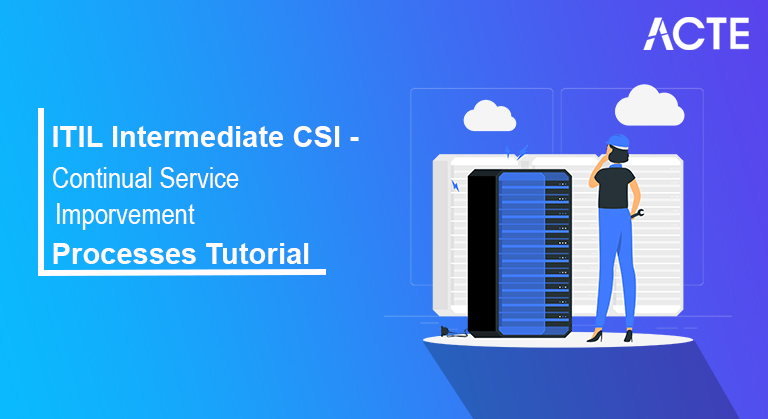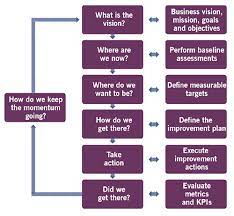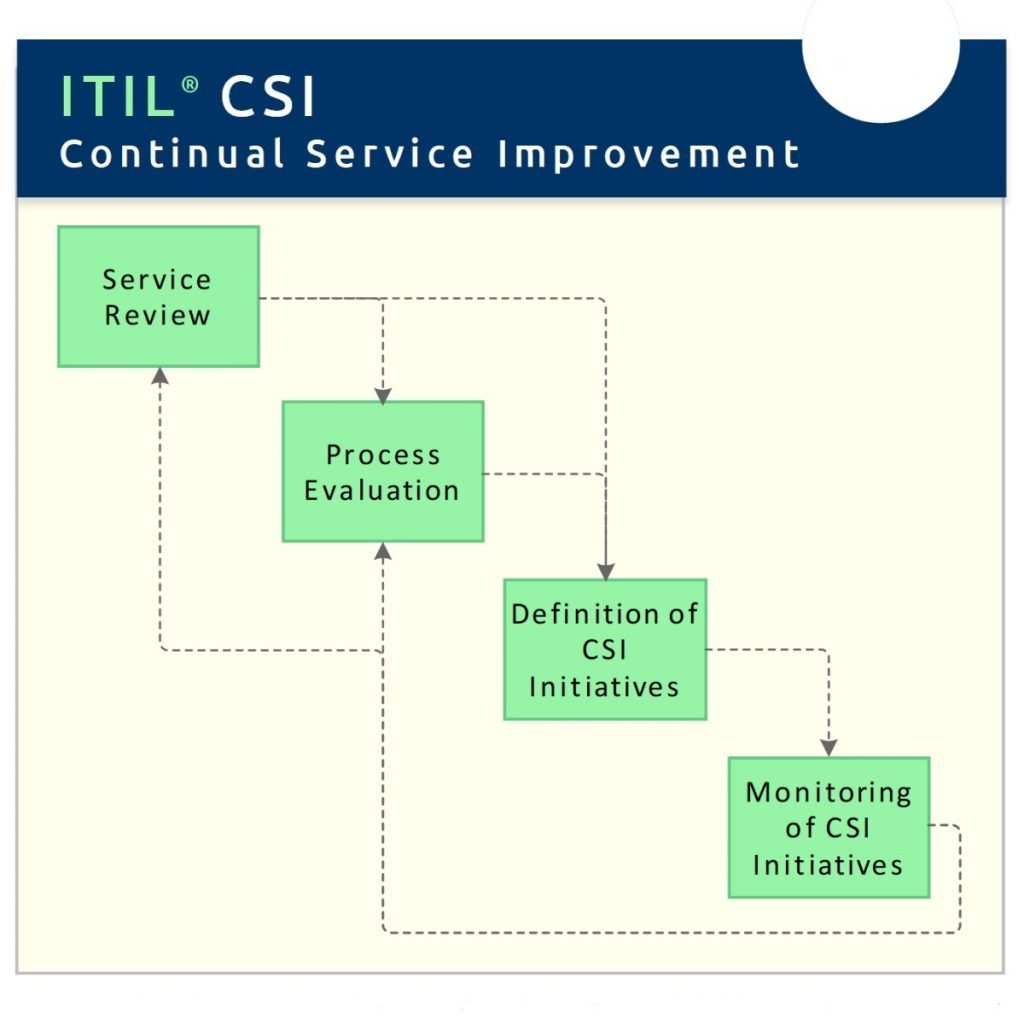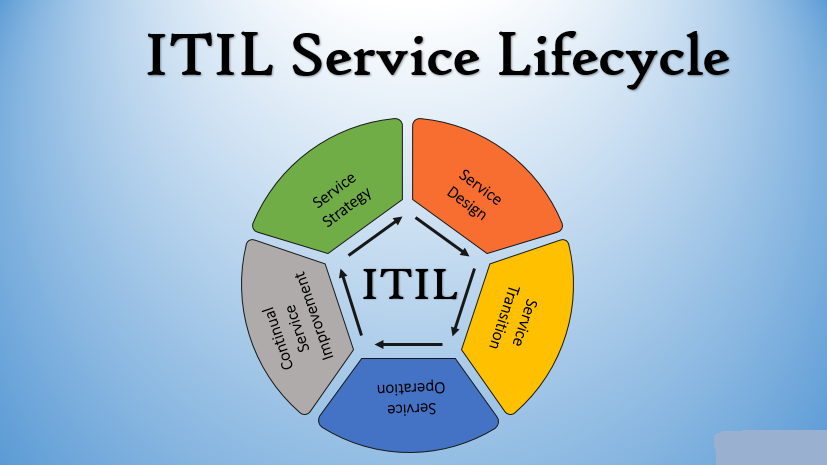
- ITIL Continous Improvement Model
- Steps of the ceaseless improvement model
- Nonstop improvement and the core values
- Destinations
- Exercises Supporting CSI
- Benefits of ITIL
- Significant Terms utilized in the ITIL
- ITIL Role
- ITSM (IT Service Management)
- CI (Configuration Item)
- CMDB (Configuration Management Database)
- CMS (Configuration Management System)
- Administration Lifecycle in ITIL
- Conclusion
- The reason for persistent improvement is to guarantee the assistance and item stays adjusted to the business consistently.
- This requires perceivability into the assistance climate in whole, as the general improvement is the consequence of progress completed at all levels.
- That is individuals, processes, providers, IT Infrastructure, programming application and so on, are to perform at required level and work with co-production of significant worth.
- The nonstop improvement of an assistance and administration execution should zero in on guaranteeing critical advantages to business, by applying the core values characterized in ITIL really. Every one of the means characterized in nonstop improvement model are fundamentally significant and they ought to think about each of the seven standards, in each drive of enhancements.
- The seven standards characterized in ITIL4 are adhered to while playing out each progression of the ceaseless improvement model so there are expanded possibilities becoming fruitful, for generally improvement of the administrations.
- The table underneath traces the means of consistent improvement model and every one of the core values is especially applicable to them. In any case, all standards are appropriate to all means at some level, it features the most significant (essentially) standards considered in the persistent improvement model.
- Ceaseless Service Improvement (CSI) manages measures to be taken to work on the nature of administrations by gaining from past triumphs and disappointments. Its motivation is to adjust and realign IT Services to the changing necessities by distinguishing and executing enhancements to the changing industry needs.
- Audit and investigate improvement valuable open doors in each lifecycle stage.
- Audit and investigate Service Level accomplishment results.
- Work on cost adequacy of conveying IT administrations without forfeiting consumer loyalty.
- Distinguish and execute individual exercises to further develop IT administration quality.
- Guarantees relevant quality administration strategies are utilized to help persistent improvement exercises
- The means associated with CSI are clear as crystal as portrayed in the accompanying outline − Viewpoints of Benefits
- Here are the four viewpoints of advantages that are thought about while examining results of CSI − Improvement
- This is examination of aftereffect of present status of administration to past.
- Capacities: Ability or limit is the degree of solidarity of the administrations and foundation of IT. It is an elusive resource of any association or business.
- Assets: It is a term that incorporates individuals, framework, cash, applications, and so forth which might help in conveying IT administrations.
- Gauge: It is alluded to as a (beginning) introductory mark of an assistance or task. In this structure, it is utilized for estimating how the tasks of IT are performing.
- Process: This term is a bunch of exercises, which are intended to play out a specific target. It acknowledges at least one characterized inputs and changes them into a result which is characterized. Process is a term which is set off by the specific occasions.
- Administration It is a method for conveying the qualities to the clients by accomplishing the client’s outcome without characterizing the expenses and dangers. In some cases, this term is additionally an equivalent word for IT administration, administration bundle or center assistance.
- It is a part straightforwardly affecting the conveying IT administrations. The data for every Configuration Item is consequently put away in the setup record inside the CMS (Configuration Management framework).
- This term incorporates its administrations, programming, equipment, building, and the conventional documentation like SLAs (Service Level Agreement).
- The ITIL system is totally founded on the lifecycle of a help.
- The lifecycle of IT Service Management is likewise called as a ‘Plan-Do-Check-Act (PDCA)’ or ‘Deming Cycle’.
- It helps the specialist co-ops to accomplish a superior comprehension of its design.
- It likewise characterizes the interaction that how the administrations are begun and kept up with.
- The lifecycle of a help in the system of ITIL is comprehensively arranged into the accompanying five phases:
- Review and analyze improvement opportunities in every lifecycle phaseAnalyze and evaluate Service Level achievement results.Improve cost-effectiveness of delivered IT services without impacting on customer satisfaction.Ensures alignment with quality management methods to support improvement activities.
- This CSI process group (Stage) acts as a guide and provide continual feedback to every process groups (Service Strategy, Service Design, Service Transition, and Service Operation) of Service Management Life-Cycle.
- The Below Image shows the Flow of information between CSI other processes and how it provides feedback to each of the processes. This is very important to remember that, this is not a static one-time process. Instead, as the name suggests, it is a continual process which runs in periodic cycles.
- ITIL Continual Service Improvement (CSI) Approaches:This process follows a six-step approach for reviewing, evaluation, planning, and implementing the Improvement process. These approaches are nothing but some pre-defined questions, for which the CSI process tries to find answers.
- Continuous Service Improvement (CSI) deals with measures to be taken to improve the quality of services by learning from past successes and failures.
- Its purpose is to align and realign IT Services to the changing needs by identifying and implementing improvements to the changing business needs.
ITIL Continous Improvement Model :-

Steps of the ceaseless improvement model :-
The ceaseless improvement utilizes the persistent improvement model portrayed underneath, which gives the necessary way to deal with constant improvement, which applies to SVS in whole.
Nonstop improvement and the core values :-
Destinations :-
The few targets of Continual Service Improvement are as per the following −
Exercises Supporting CSI :-
The exercises that help CSI don’t occur consequently and subsequently expected to be possessed inside IT association which is fit for taking care of the obligations and cycles the suitable power to get things going. Here are the exercises supporting Continual Service Improvement.
CSI Process Model :
Benefits of ITIL :-
Following are the different benefits or advantages of ITIL:
1. One of the greatest benefits of ITIL is that it helps in expanding the consumer loyalty.
2. It permits directors to further develop the dynamic cycle.
3. It is additionally utilized for making the reasonable construction of an association.
4. It likewise helps directors by controlling the framework administrations.
5. It works on the association between the clients and the specialist co-op.
6. With the assistance of this system, administration conveyance is likewise gotten to the next level.
7. It lays out the system of ITSM for the association.

Benefits of ITIL
Significant Terms utilized in the ITIL :-
There are different after terms utilized in the ITIL which are expected to learn:
ITIL Role:-
Job is a term, which is an assortment of explicit exercises, specialists, and obligations conceded to an individual or group.
1. Business Case: The business case is a term depicting the normal cost and benefit which can be accomplished as the aftereffect of a change.
2. Work: In ITIL system, work is a gathering of devices and individuals which is utilized to perform at least one exercises or cycles.
3. Process Owner: A Process Owner has an obligation to deal with the general presentation, plan, coordination, improvement of a solitary interaction.
4. Process Manager: In enormous associations, there are independent Process Manager and Process Owner for the better administration. In any association, the job of a Process Manager is to deal with the cycles functionally.
5. Administration Owner: The assistance proprietor is an individual in an association, whose job is to convey the particular help according to the SLA (Service Level Agreement). Likewise, he is answerable for dealing with the general exhibition, plan, and incorporation of a solitary assistance.
ITSM (IT Service Management):-
It is a term in the ITIL structure, which offers the types of assistance of IT in an engaged and client-accommodating way. The principle part of ITSM is a structure which plan the administrations as indicated by the SLA. Also, that structure is known as SLM (Service Level Management).
CI (Configuration Item) :-
CMDB (Configuration Management Database) :-
This part is utilized for putting away the setup records, which contains the traits and the connections of CI. It is a term, which likewise tracks the between connection between every one of the Configuration Items.
CMS (Configuration Management System) :-
A CMS is an assortment of instruments and information bases, which deals with the setup information of IT administrations suppliers. It is a part, which additionally contains the data about the issues, changes, known mistakes, and episodes. It might likewise contain information about providers, specialty units, clients, workers and the end-clients.The CMS is utilized by every one of the cycles of ITSM and kept up with by the setup the board.
Administration Lifecycle in ITIL :-

What Is Continual Service Improvement (CSI) In ITIL ITSM?
ITIL Continual Service Improvement (CSI) is the fifth and final Process-group of ITIL Service Management Lifecycle under ITIL’s IT Service Management Framework (ITSM). It aims to deal with measures to be adopted to improve the service quality by learning from past successes and failures.CSI also aligns and realigns IT Services to the changing business requirements by identifying and implementing changes for improvements. For doing this, it takes the similar approach described in Deming Cycle (Plan-Do-Check-Act).
The ITIL Continual Service Improvement (CSI) actually describes the best practices for achieving incremental and large-scale improvements in services quality, operational efficiency, and business continuity. It effectively describes and utilizes the concept of Key Performance Indicator (KPI), which is a metrics-driven process, for reviewing, evaluating, and benchmarking performance of services.
ITIL Continual Service Improvement (CSI) Objective:-
According to ITIL v3, the primary objective of ITIL Continual Service Improvement (CSI) stage is to continually improve the quality, effectiveness, and efficiency of IT processes and services. Some other objectives of CSI are as follows:
Steps Of The Continual Improvement Model :-
The continual improvement uses the continual improvement model depicted below, which provides the required approach for continual improvement, which applies to SVS in entirety.
CSI continually improves the effectiveness and efficiency of services and processes.ITIL V3 defines one process in the CSI stage of the service lifecycle: The “Seven-Step Improvement Process”. These seven steps describe a generic approach to continual improvement that can be applied in many situations, rather than a process that organizations would implement in practice. Specific CSI methods and techniques are mostly discussed in other parts of the ITIL CSI publication.






